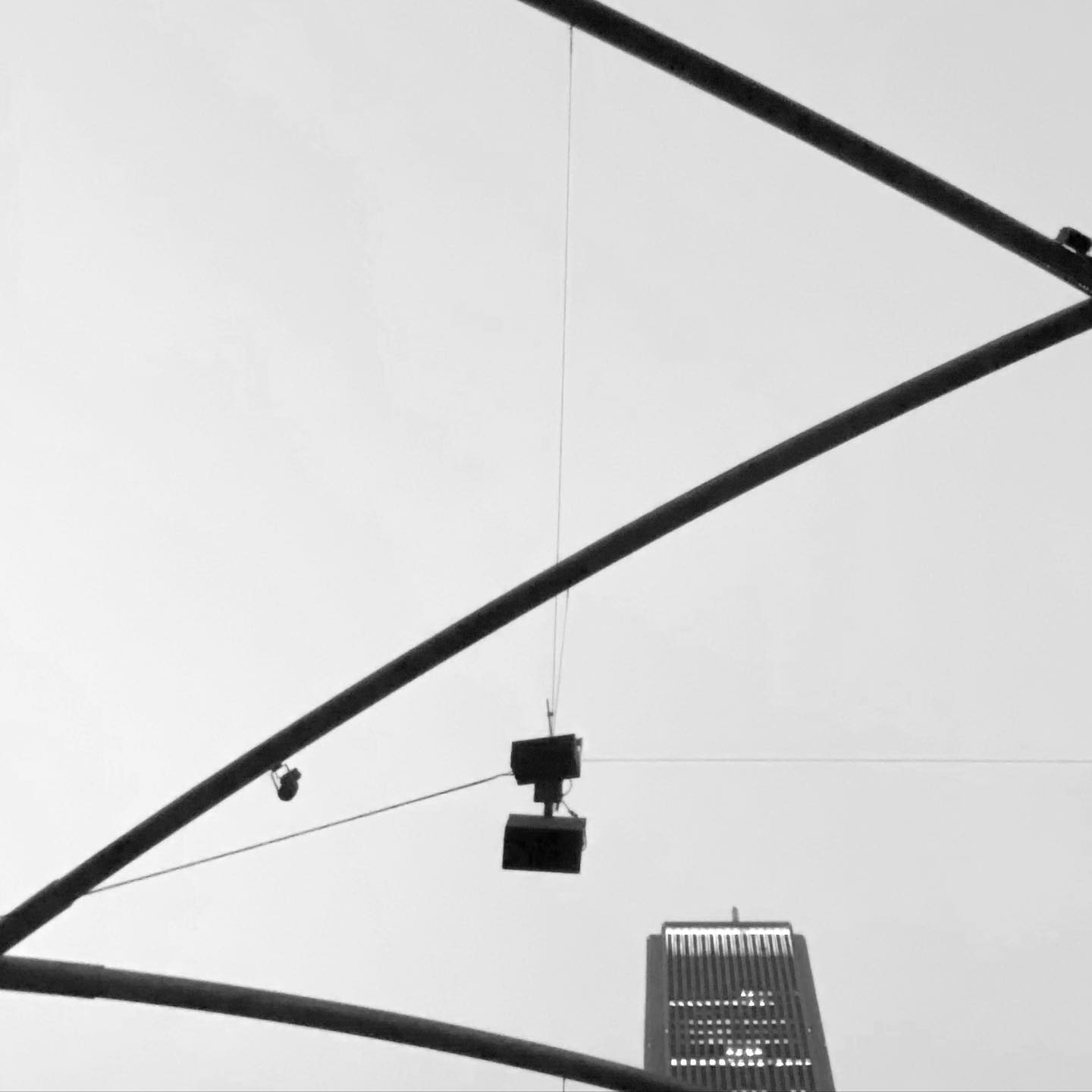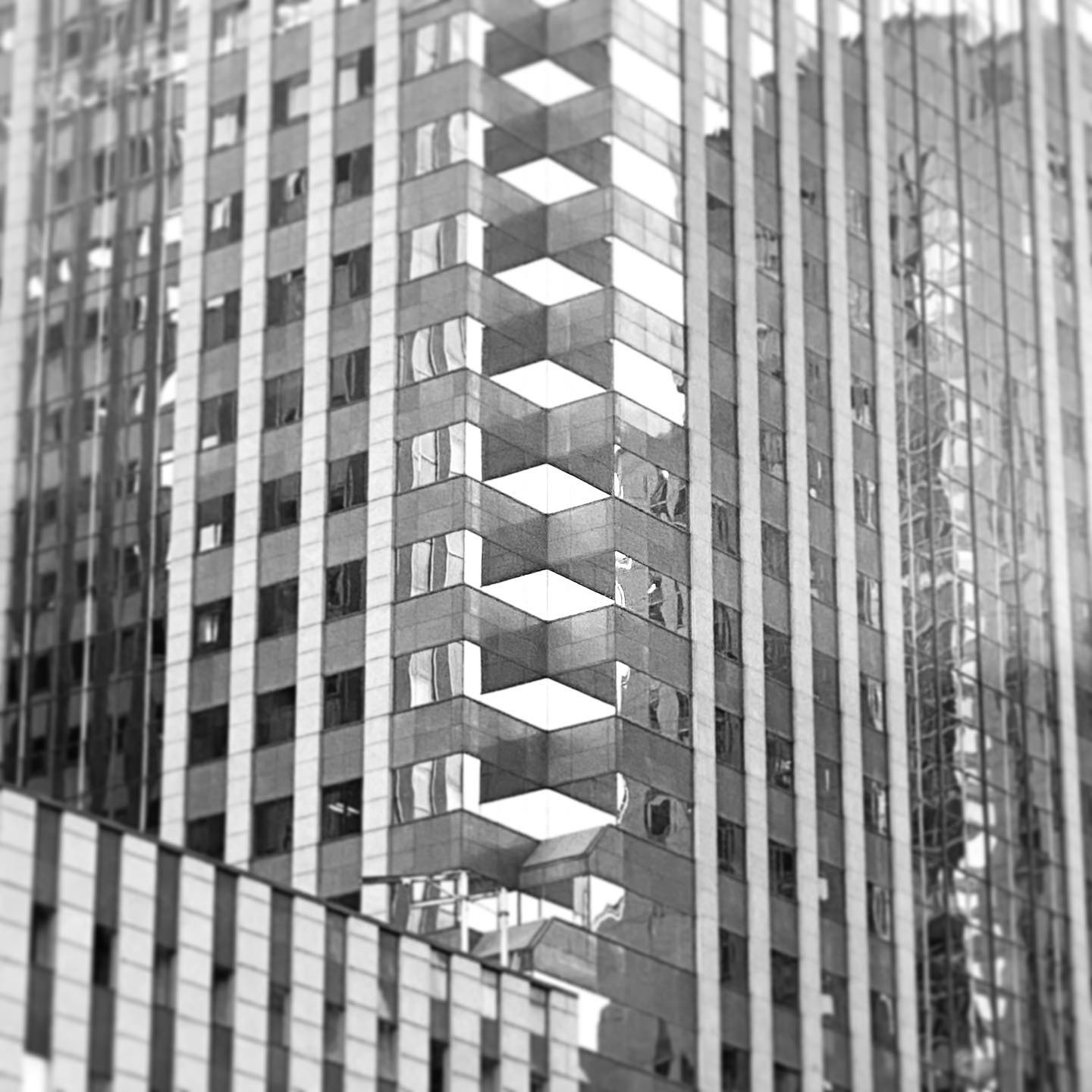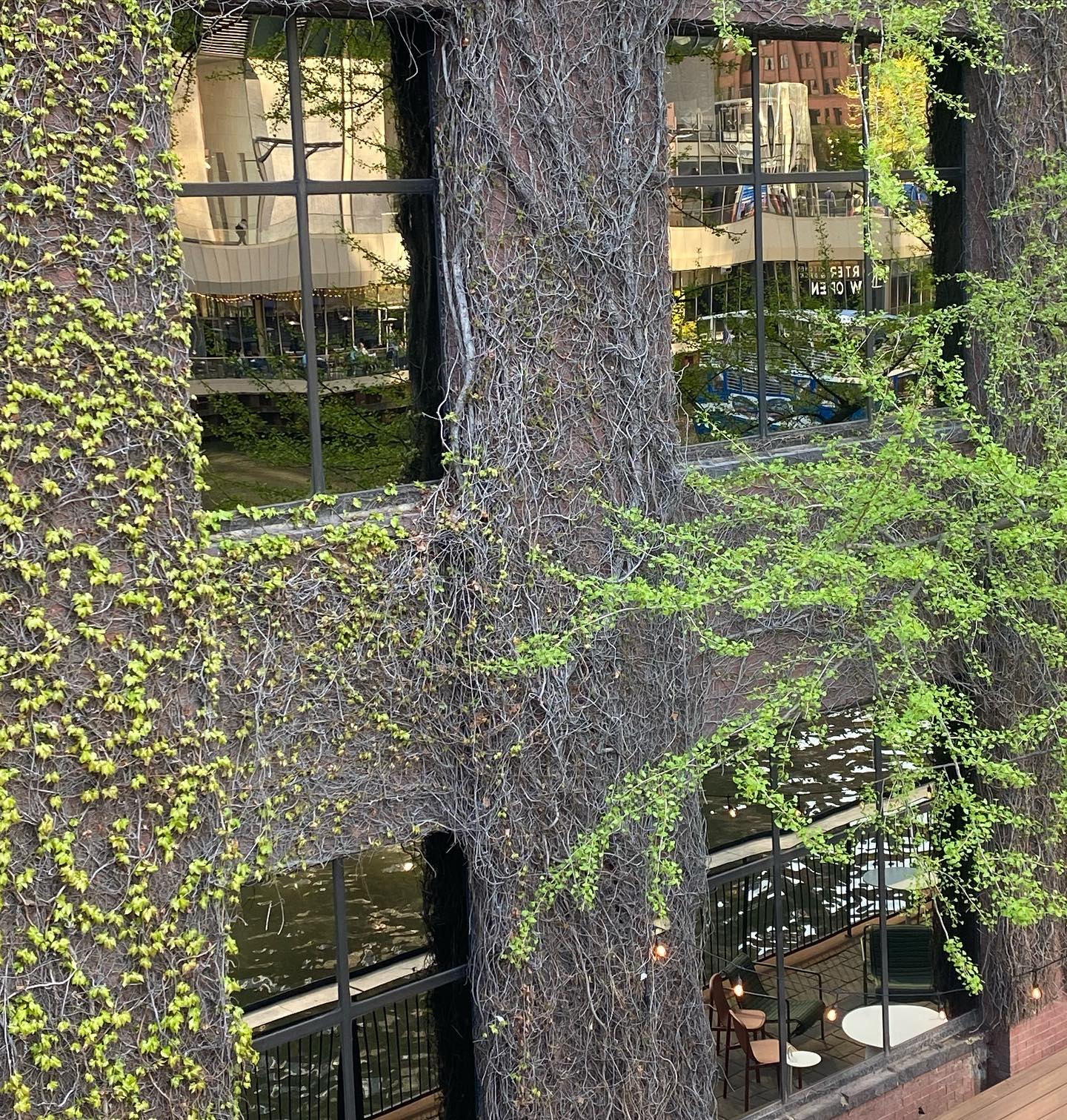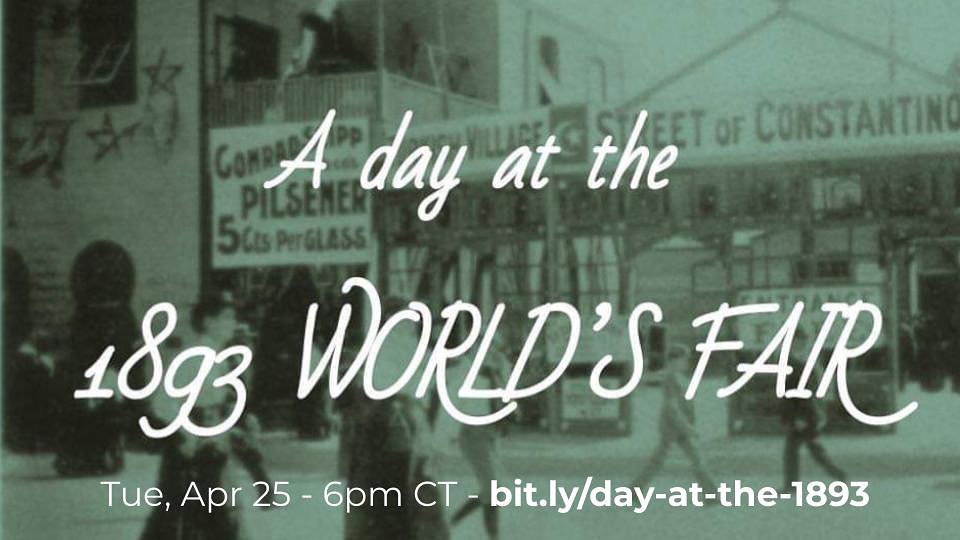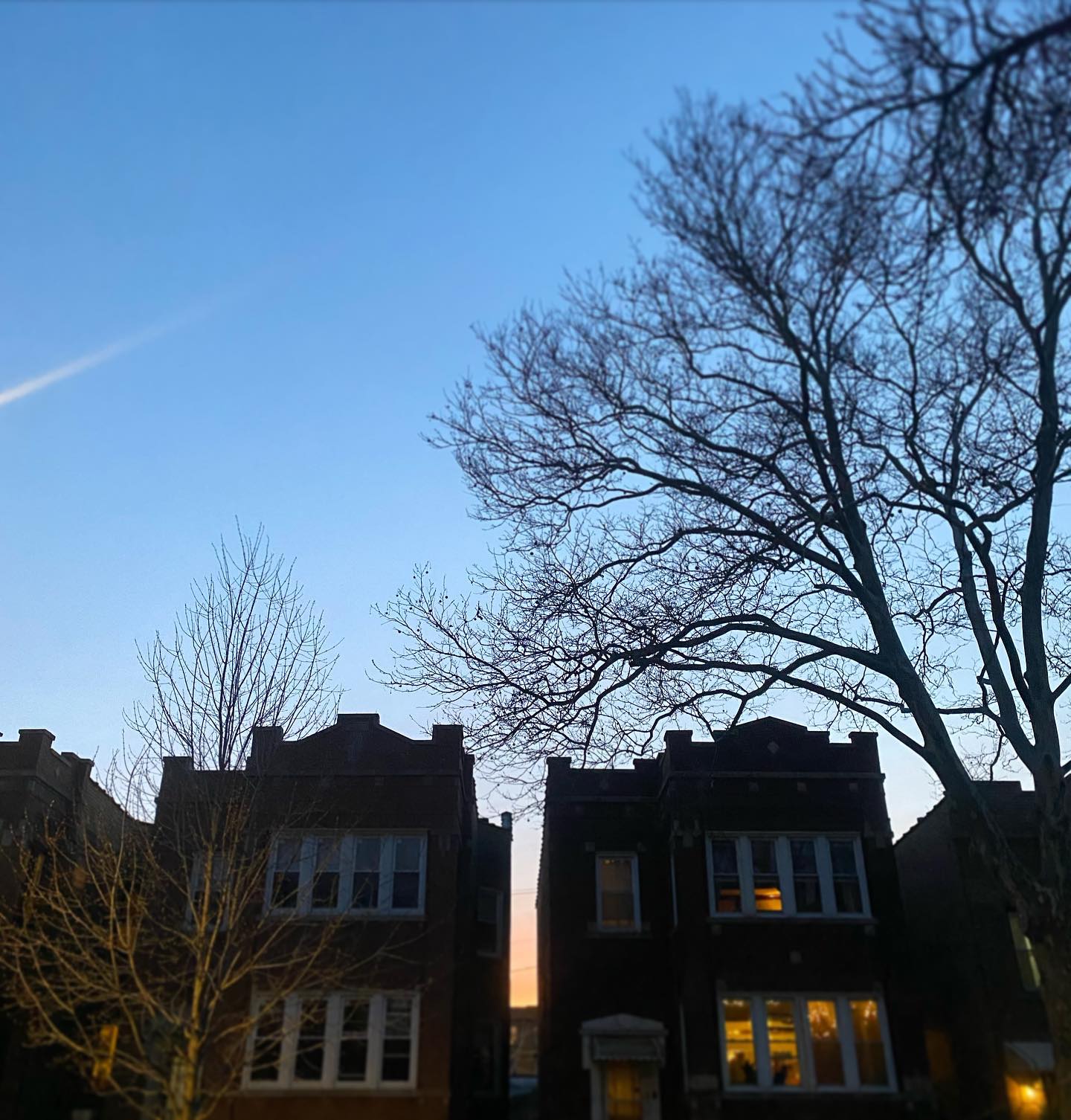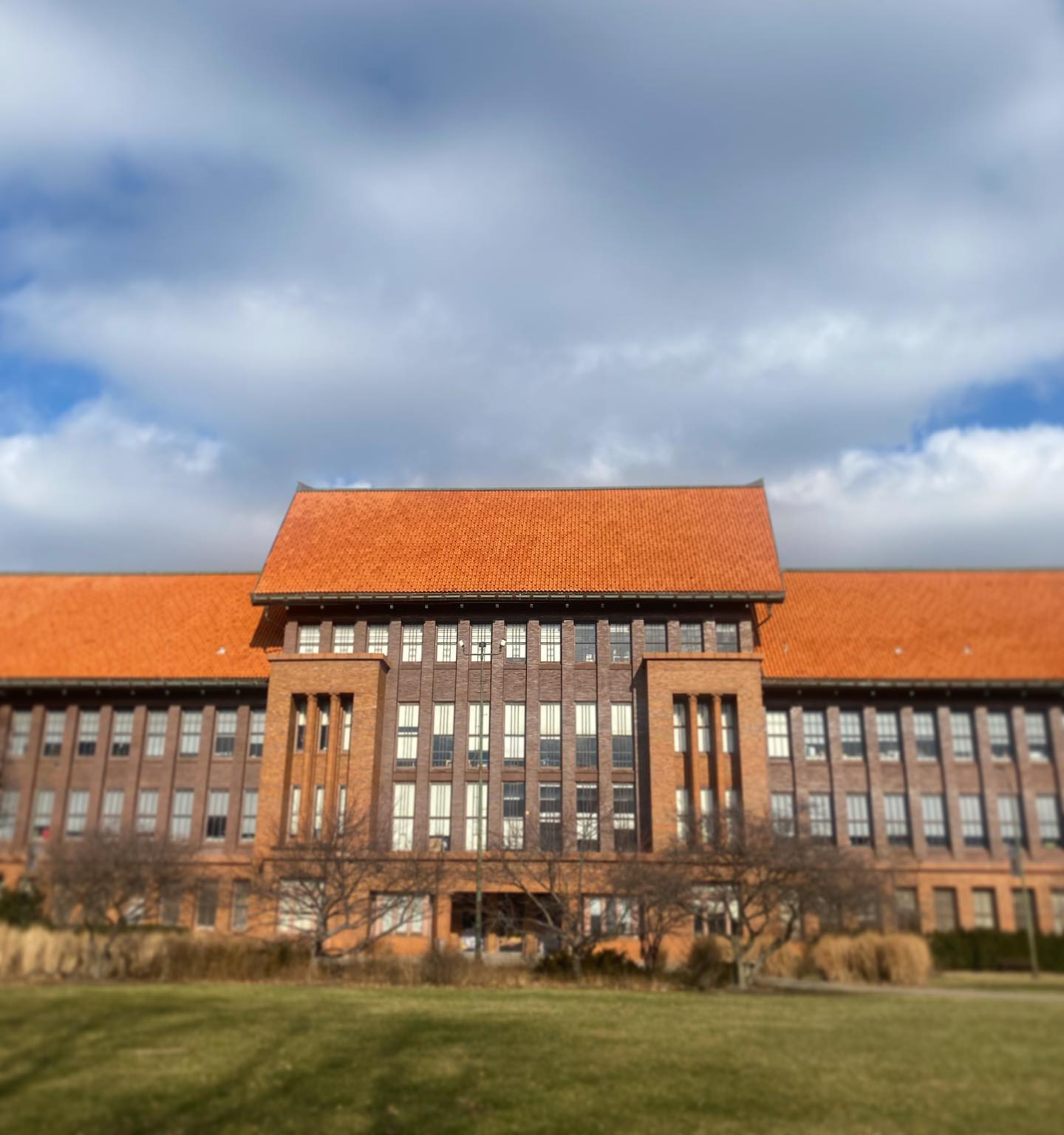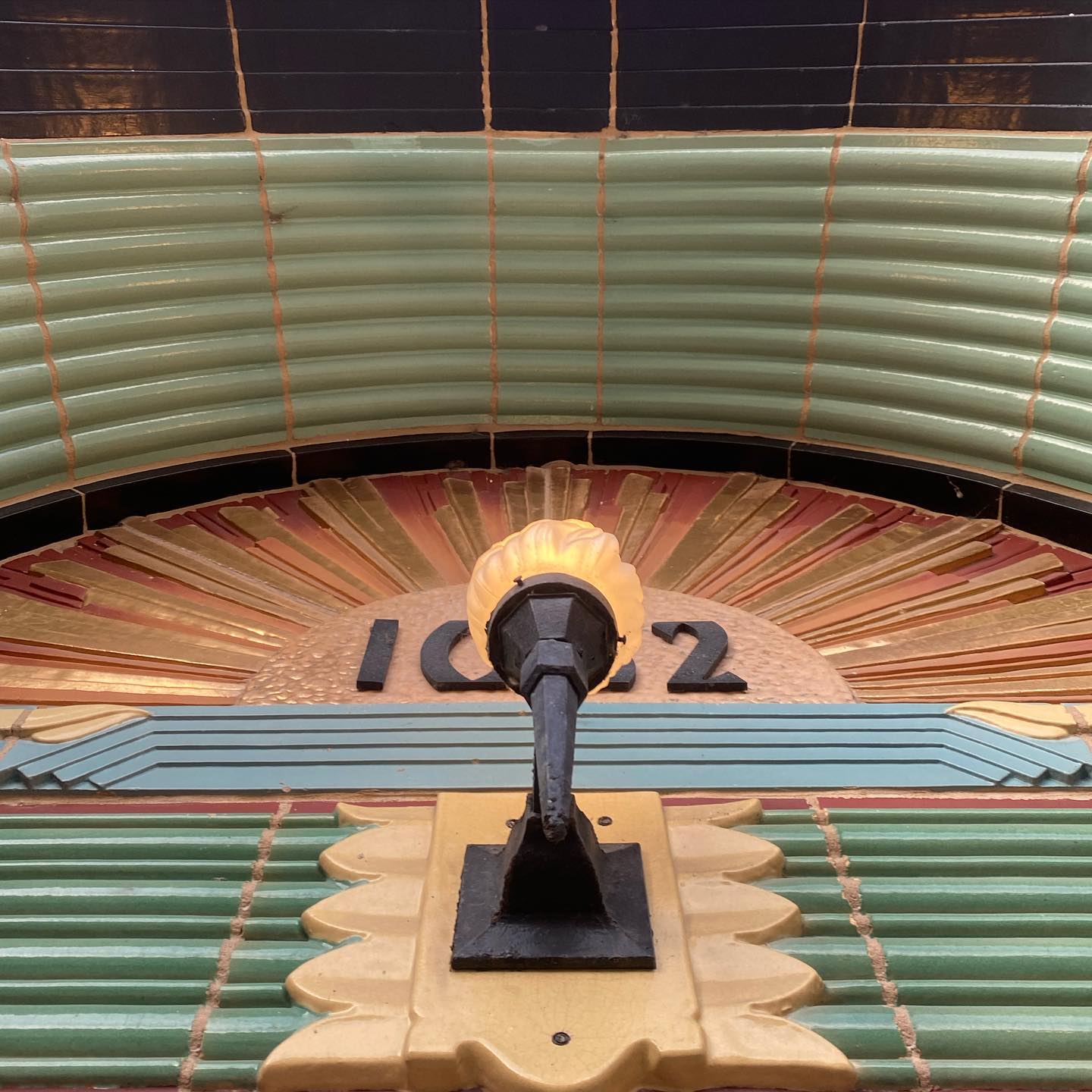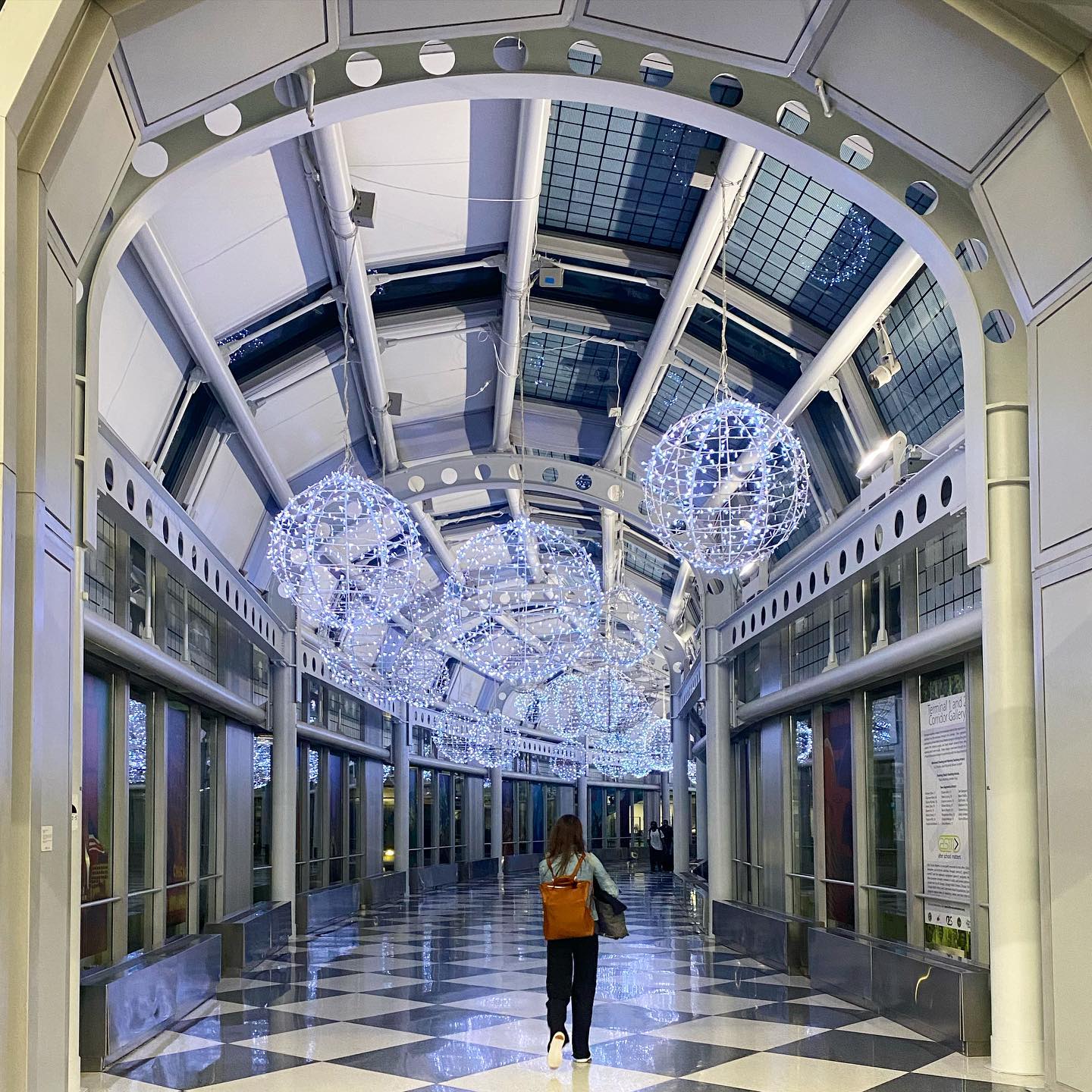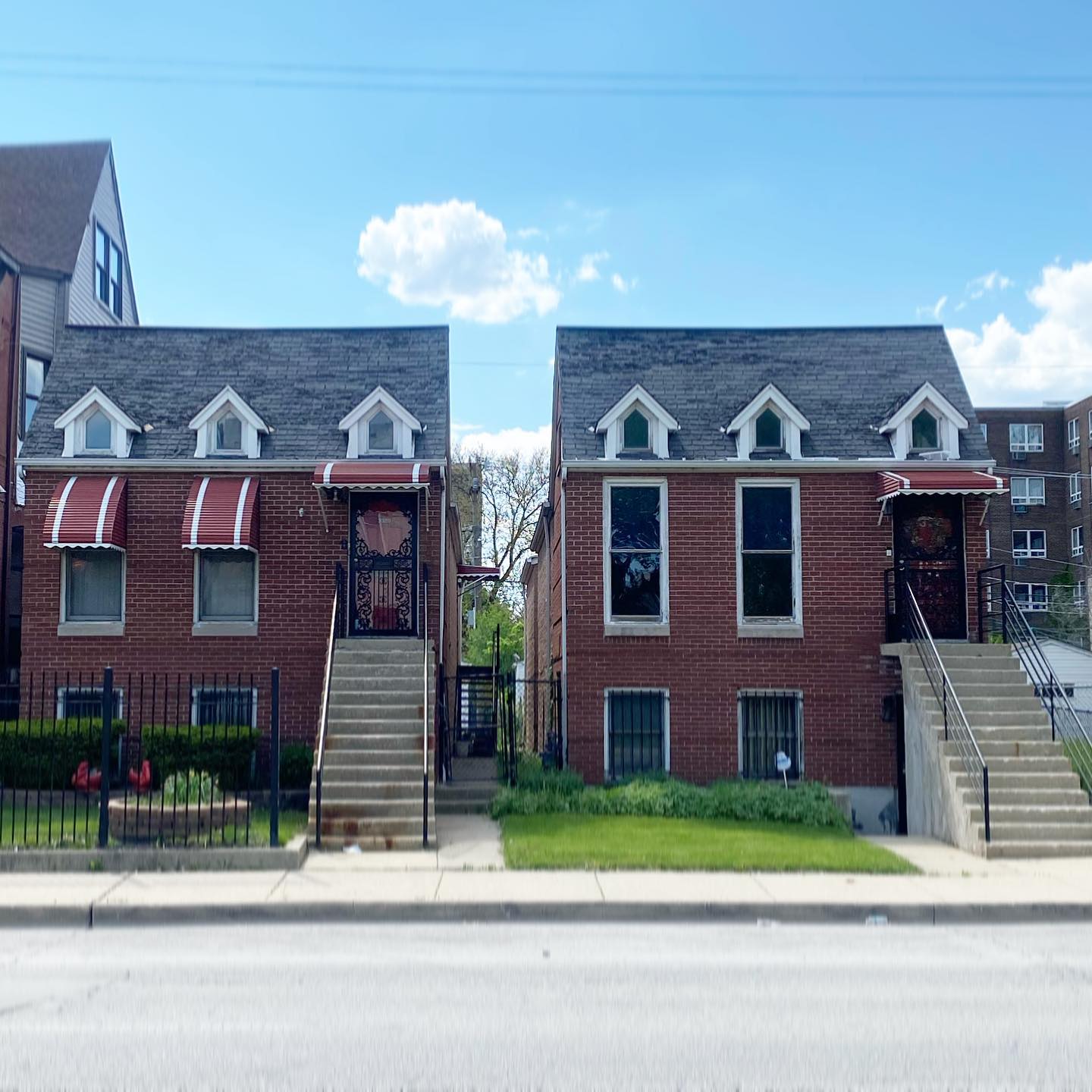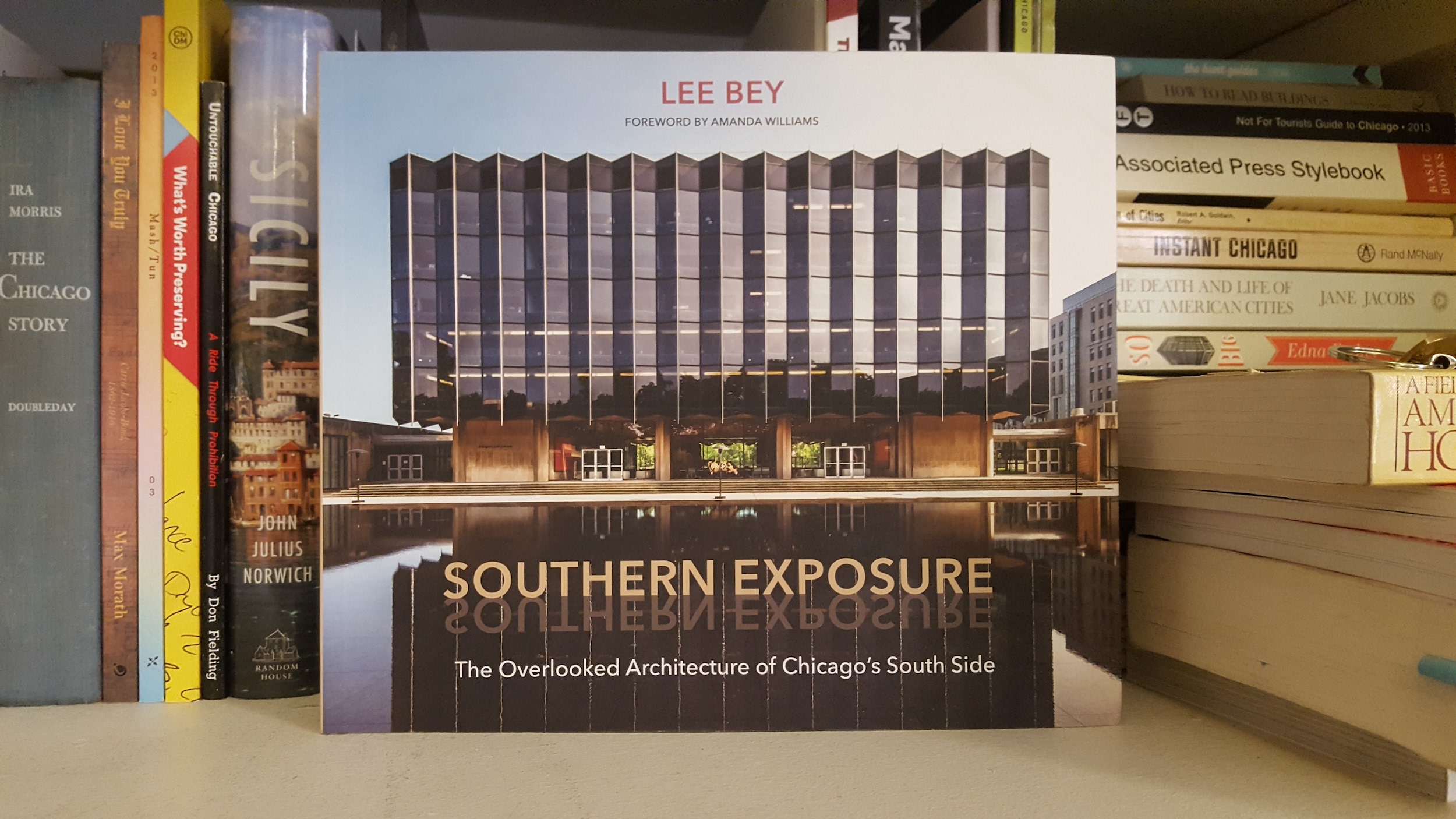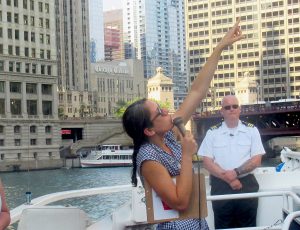World-famous skyscrapers bookend the Magnificent Mile and the Water Tower is a legendary presence, but today I want to highlight some of the lesser-known historic architecture on the Mag Mile. They don’t call us “Chicago Detours” for nothing! Of course the architectural boat tours talk about the Wrigley Building and Tribune Tower, and your hop-on hop-off tours will laud the Water Tower and Hancock Center. These are all worth discussion and there are some real gems that curious people can appreciate in between. (You can also sign onto our Historic Chicago Walking Bar Tour to discover even more about this area – hint hint :D)
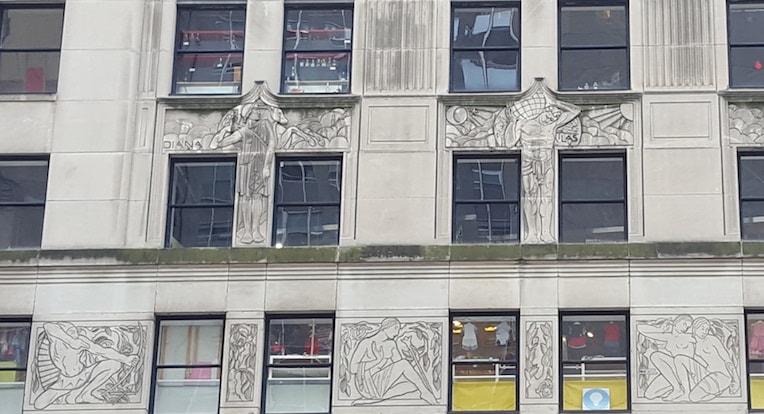
McGraw-Hill Building
The McGraw-Hill Building is unlike any other example of historic architecture on the Mag Mile. While most of the structure is a contemporary development, the facade is nearly a century old. If that seems confusing, well, it sort of is. The McGraw-Hill Building is a small Art Deco tower at 520 North Michigan. You can easily miss this tiny gem next to the soaring Tribune Tower and Wrigley Building, but it certainly doesn’t lack for charms. This building originally housed the eponymous educational publisher, but its biggest claim to fame was its stunning facade. The graceful art nouveau carvings by sculptor Gwen Lux have always seemed to me like an architectural analogue to the dreamy artwork of a children’s fantasy book.
City Hall designated the McGraw-Hill Building an official Chicago Landmark in 1997. Like clockwork, the building was promptly torn down in 1998. But there’s a twist! The developers who demolished the building had the sense to save its historic facade. I love the description of the facade’s storage from this New York Times article:
“No previous experience with landmarks quite prepares a visitor for the sight of an entire building on wood pallets, stretching horizontally rather than vertically, farther than the eye can see, over more than two acres of floor space — a rippled, Cubist ocean of limestone, cast stone and pink granite.”
A new luxury hotel was built on the spot in 2000 and the historic facade was tacked onto the exterior. This swanky hotel was named The Gwen as a reference to the facade’s talented sculptor, and the structure is now part of the larger North Bridge shopping, entertainment, and dining facility.
Woman’s Athletic Club
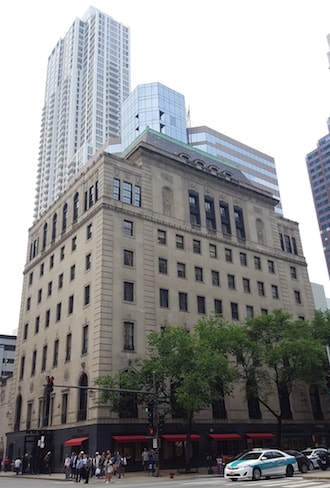
Just a few blocks north from Mc-Graw Hill you can find the Woman’s Athletic Club of Chicago building. Some of the wealthiest women in Chicago society, including initial President Malvina Armour (yes, Armour of the hot dogs and much more), founded the WAC back in 1898. Her husband derided the idea as “a good joke;” nevertheless, she persisted and formed the nation’s first club devoted to women’s fitness.The women who founded this club were the “who’s who” of Chicago society in those days.
The WAC moved up to Michigan Ave in 1929. Their building, designed to evoke the Neo-Classical buildings of Paris, was one of architect Philip B. Maher’s first major commissions. He used a tripartite design, which divides the facade into thirds. He covered the base in polished black granite, giving way to Chicago’s beloved limestone up above. Huge Classical-style rounded windows light up the grand interior ballrooms and athletic facilities on the second floor. The facade then falls into a regular Classical-style grid, which is crowned with a highly-decorated capital. The cornice on that capital hides a setback Beaux Arts mansard roof from passersby on the street below.
That Parisian style gestures back towards Daniel Burnham’s Plan of Chicago. His “City Beautiful” movement was an exercise in replication. Specifically, it was about replicating the Paris of Baron Haussman. City Beautiful proponents believed that creating monumental Beaux Arts structures and spaces would fix all the ills of industrial urbanization. This goal might have been naive or over-ambitious, but it looks nice and meshes with the conscientious-but-also-astoundingly-rich milieu of the WAC. It’s just hard to imagine all of Michigan Avenue looking like this example of historic architecture on the Mag Mile.
Today it is still the Women’s Athletic Club, and you still need to know a high-society woman to be considered for membership. The Women’s Athletic Club also continues to host lady royalty from around the world when they come to visit Chicago.
The Allerton Hotel

Visitors and locals alike love the famous “Tip-Top-Tap” sign atop the Allerton Hotel. That famous cocktail lounge and jazz nightclub closed in 1961, but the gorgeous neon sign remains. Behind this historic sign, the Allerton Hotel has some gorgeous Roaring Twenties architecture that has gone through nearly a century of fascinating social history.
Constructed in 1923-4, the hotel was symbolic of the rising fortunes of North Michigan Avenue. The Michigan Avenue Bridge, a central element of the Burnham Plan, opened at the start of the decade creating a vital conduit from this area to the bustling Loop across the river. Developers eagerly leapt into the newly-valuable turf, looking to replace both the stately McCormickville and the disreputable Streeterville with an “American Champs-Élysées.” This initiated the construction of the landmark office buildings and hotels that now bookend the Mag Mile, with the Allerton smack-dab in the middle.
Interestingly, the Allerton was not a hotel in the way we think of them today. Rather, it was originally incarnated as a upscale residential club hotel. Literal train loads of single young people moved to Chicago each year. These were the original Yuppies, often straight from college and looking for downtown jobs. These junior managers would rent a long-term room at hotels like the Allerton.
Men occupied 14 floors, and women resided on six. Men and women had separate elevators, but surely shenanigans ensued all the same! Those men’s floors must have been an Ivy League fraternity on steroids, with all the young men surrounded by plush decor, libraries, lounges, and the Tip-Top-Tap right upstairs.
This bit of historic architecture on the Mag Mile also claims to be the city’s first skyscraper with setbacks and distinct towers. The city mandated these so that light and air could get down to the streets. The setbacks and towers, along with the red brick curtain walls, lend the building a castle-like atmosphere. Today it is still the Allerton Hotel, and just about everything in the interior spaces have been updated.
Historic Architecture on the Mag Mile
These three just scratch the surface of the historic architecture on the Mag Mile. I always loved noting these lesser-known beauties on our Historic Chicago Walking Bar Tour. They’re a vivid reminder of how this vital and vibrant boulevard has changed over the years.
– Alex Bean, Chicago Detours Content Manager and Tour Guide


